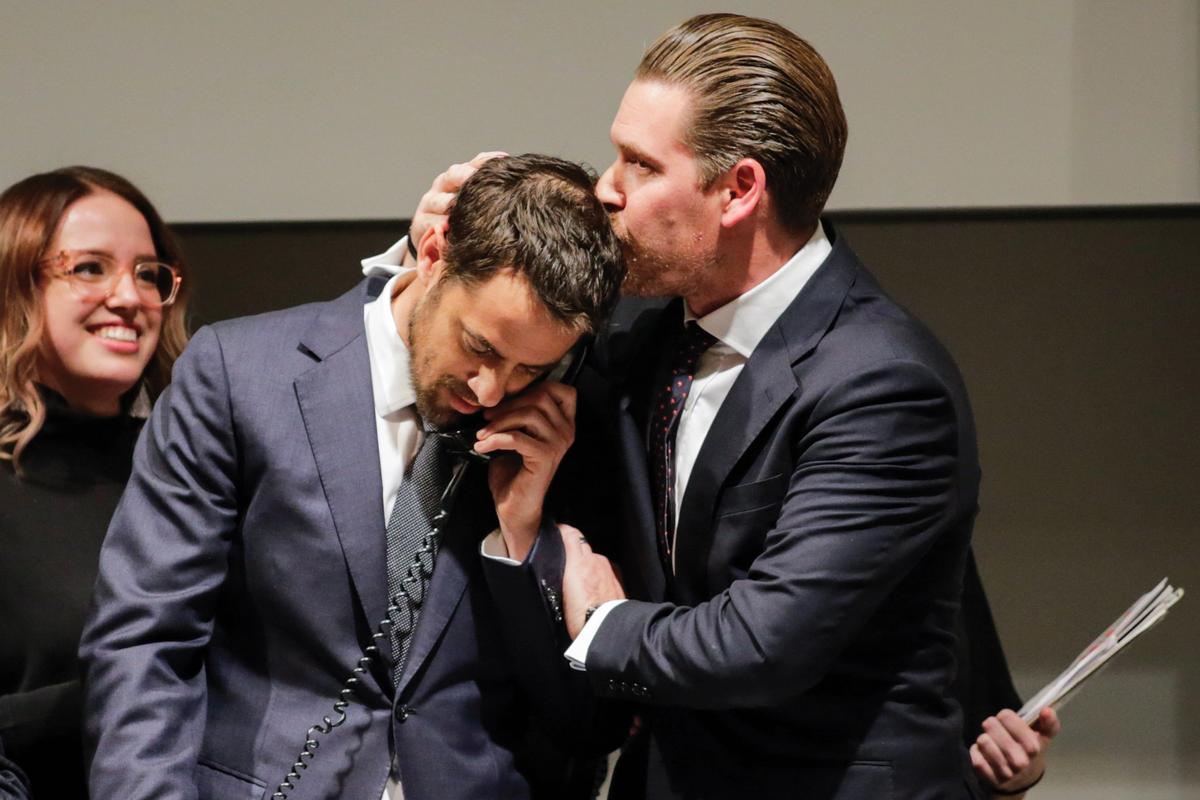"What an incredible ride it has been.” So posted Francis Outred, the chairman of post war and contemporary art for Christie’s Europe, marking his last day at the auction house, via Instagram on 30 November. He had been at the firm for ten high-octane years and it’s difficult to dispute his view that he deserves, as he puts it, a bit of a break. It seems that Outred, who was previously at Sotheby’s for nearly ten years, is an auction veteran at the age of only 45.
Ditto Loic Gouzer, who in a shock announcement yesterday said he will be leaving his job at Christie’s as the co-chairman of post-war and contemporary art in the Americas at the tender age of 38—he too joined from Sotheby’s, seven years ago.
The swaggering Gouzer, whose name is seemingly always followed by the words “maverick” or “rainmaker”, is credited as the architect of the sale of Leonardo da Vinci’s Salvator Mundi for $450.3m in 2017. Gouzer’s plans are also unclear at the moment, although in a statement he said he will spend “the next few months concentrating on conservation and climate issues before coming back to the art world with a new project.” Sell art, save the world, sell art—the new order.
Until recently, such rapid churn and frequent high-profile departures would have been implausible. Auction house specialists were lifers, with those who worked beneath them waiting to fill a dead man’s (and it was normally a man’s) shoes. But today’s market is a fast-paced, 24/7, billion-dollar ride that demands increasingly more of its players, whose every consignment and sale result is scrutinised—and not just by the growing barrage of online art market news. Gentlemanly rivalry has turned cut-throat competition—both between and within auction houses—all with the added pressure of turning a meaningful profit while winning limited market share.
There are some advantages to this white-knuckle situation. At best, auction executives are incentivised enough to pull it off, which benefits their consigners. And once the thrusting business-getters step aside, opportunities open up to others in their teams who would perhaps otherwise be overlooked. Younger staff can cut their teeth, and women, while still a rarity in the upper echelons, are increasingly influential. A restructuring after Outred’s departure meant that Katharine Arnold and Mariolina Bassetti have now been deservedly promoted.
However, there are no current plans to replace Gouzer in New York—Alex Rotter will remain as the sole department chairman in the Americas. This is, perhaps, telling—many are expecting a less bullish art market in 2019, and Christie’s may be glad to save on a hefty paycheck.
At the same time, the auction houses are helping to create even more competition. It’s a relationship business and most senior auction staff accrue impressive rolodexes and (despite lengthy gardening leave stipulations for some) can go on to advise the same crop of clients privately. This more boutique approach, working across all areas of the art market, is reminiscent of the niche investment banks that emerged out of the bulge-bracket finance firms these past ten years. There is more risk—a founder’s own money is generally on the line—but potentially more reward.
Such gains are not purely financial: ex-auction staff cite a better work-life balance, plus job satisfaction. “[In an auction house], everything was to a very transactional schedule and you didn’t really have time to look properly at art or artists. I get to do that now, and I can make my own decisions,” says Brett Gorvy, who left as Christie’s head of post war and contemporary art in 2016 to co-found the Lévy Gorvy gallery and advisory business.
Others say that such freedom is still possible within the auction houses—it just depends what you are doing, and where. Cheyenne Westphal, Phillips’s chairman, says that she naturally thought about setting up solo when she decided to leave Sotheby’s after 25 years in 2017, but in the end was happily persuaded to the leadership role at Phillips. “It’s a business that’s moving in a forward direction and that I can shape at the same time,” she says.
Plus, she notes, on the global art market roller-coaster, burnout isn’t just the sole preserve of the auction houses. “A lot of dealers were pretty much on their knees by the end of [Art Basel in] Miami,” she says.



